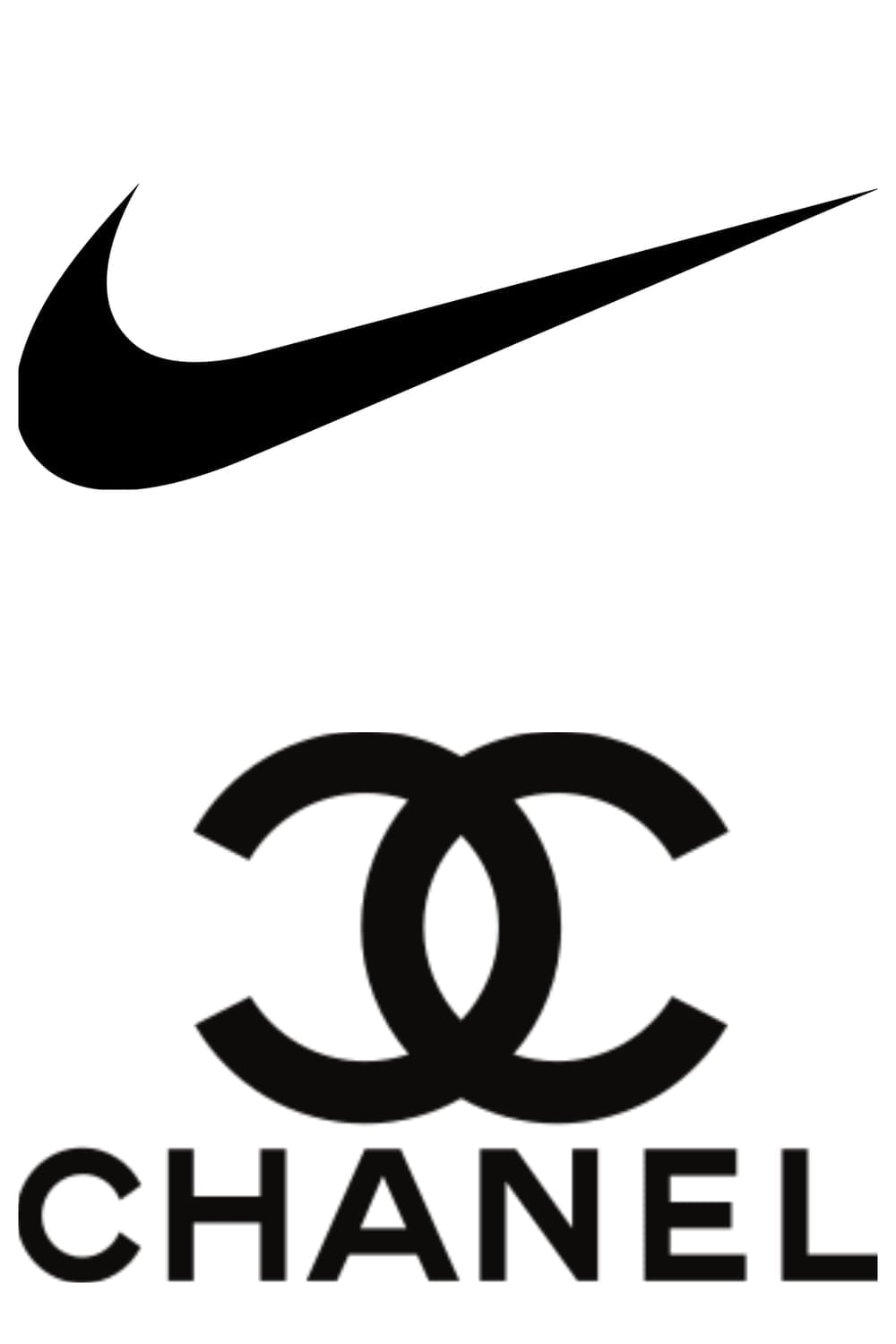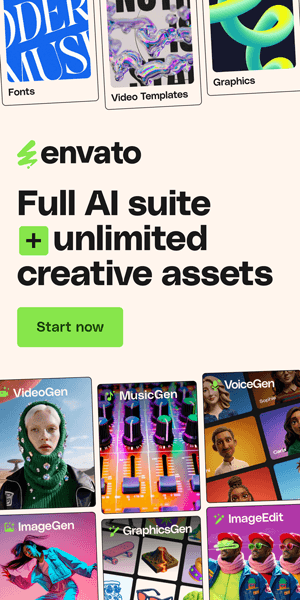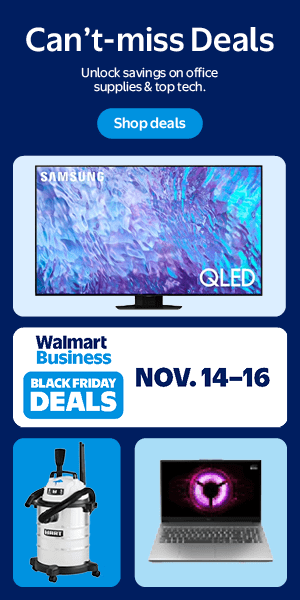How to Create a Fashion Logo That Stands the Test of Time
Introduction
The power of a signature is immense, and for a fashion brand, that signature is its logo. A great fashion logo does more than just identify a brand; it encapsulates its entire identity, values, and story in a single, memorable image. It's the silent ambassador for your clothes, your accessories, and your vision.
While trends come and go, the most successful fashion logos have something in common: they stand the test of time. Think of the timeless interlocking C's of Chanel, the subtle horse and rider of Ralph Lauren, or the instantly recognizable swoosh of Nike. These logos have endured for decades, not because they followed a fleeting trend, but because they were built on a foundation of solid, thoughtful design.
The goal of this guide is to provide you with a roadmap for designing a signature that will last. We’ll walk you through the essential steps, from defining your brand's core identity to choosing the right typography, so you can create a fashion logo that is not just a passing trend, but a permanent mark of your legacy.
Part 1: The Foundation - Knowing Your Brand
Before you can even think about fonts or color palettes, you have to dig deep and get to know your brand. Your logo isn't just a pretty picture; it's a visual representation of your brand's essence. A great logo is born from a clear, well-defined brand identity. Think of it as the soul of your company. If you don't know who you are, how can you possibly create an accurate portrait of yourself?
Core Values:
What does your brand stand for? Are you a champion of sustainability and ethical production, or a purveyor of luxurious, handcrafted goods? Do you aim to be innovative and forward-thinking, or do you celebrate classic, timeless design? Pinpointing these core values is the first step in creating a logo that feels authentic and true to your brand's mission.
Target Audience:
Who are you speaking to? The logo for a streetwear brand targeting Gen Z will look and feel very different from one for a high-end couture house catering to an older, more affluent clientele. Understanding your audience helps you create a design that resonates with them on a deeper level. Consider their style, their values, and their expectations.
Brand Story:
Every brand has a story. Maybe you're a third-generation shoemaker, or perhaps you started your brand in a small apartment with a single sewing machine. Your brand's history and narrative are powerful tools. They can be a source of inspiration for your logo, giving it a unique and meaningful backstory that customers can connect with.
Part 2: The Principles of Timeless Design
A timeless logo isn't a happy accident. It's the result of applying core design principles that have proven their worth over centuries. By focusing on these fundamentals, you can create a logo that avoids fleeting trends and remains relevant for decades.
Simplicity is Key:

The most iconic logos in history—from the Nike swoosh to the Chanel interlocking C's—are remarkably simple. A simple logo is easy to recognize, easy to remember, and easy to apply across various mediums. It avoids clutter and doesn't rely on complex details that can get lost when the logo is resized. The goal isn't to show everything your brand does, but to communicate its essence in the most direct way possible.
Versatility and Scalability:
A great fashion logo has to work everywhere. It must be instantly recognizable on a tiny garment tag, a social media profile picture, and a large billboard. It should also look just as good in a single color (like black or white) as it does in full color. Before finalizing a design, test it in different sizes and on different backgrounds to ensure it maintains its integrity and impact no matter the context.
Uniqueness and Memorability:
In a crowded fashion market, your logo needs to stand out. It should be unique enough to distinguish you from competitors while being memorable enough that people can recall it easily. This doesn't mean it has to be complex or "out there." A subtle twist on a classic design or a clever use of negative space can make a logo distinct and unforgettable. Avoid copying other brands and instead focus on creating something that is authentically yours.
Part 3: The Design Process - From Concept to Creation
Once you have a solid understanding of your brand and the principles of timeless design, you're ready to start the creative process. This is where you bring your ideas to life, moving from abstract concepts to a tangible, visual identity.
Research and Inspiration:
Don't start with a blank page. Look for inspiration everywhere. Study the logos of historic fashion houses and modern brands you admire. Go beyond fashion and explore art, architecture, and even nature. Gather images, fonts, and color palettes that resonate with your brand's story and values. This research phase isn't about copying, but about building a mood board and a mental library of ideas to draw from.
Sketching and Ideation:
Before you touch a computer, grab a pen and paper. This is the most crucial step for a free flow of ideas. Sketch out as many different concepts as you can—even the bad ones. Explore various logo types, such as wordmarks (like Calvin Klein), lettermarks (like Louis Vuitton's "LV"), and brandmarks (like the Lacoste crocodile). Don't limit yourself to just one idea; explore multiple avenues and variations of a single concept.
Typography and Color:
The font you choose is just as important as the symbol itself. It conveys personality. An elegant serif font might be perfect for a luxury brand, while a bold, modern sans-serif could be ideal for a streetwear label. Similarly, your color palette should be carefully selected. Colors evoke emotions and have powerful psychological associations. A muted, sophisticated palette might convey luxury, while a vibrant, saturated one could express playfulness or energy.
Refinement and Feedback:
After you've created a handful of promising designs, it's time to refine them. This means fine-tuning every detail, from the spacing between letters to the thickness of lines. Don't fall in love with just one design too early. Get feedback from others, particularly your target audience. Ask them what the logo communicates to them. Their fresh perspective can help you see which design is the most effective and memorable.
Part 4: The Final Touches - Protecting Your Signature
You've done the hard work of designing a beautiful, timeless logo. Now it's time to prepare it for the real world and ensure its longevity. This final phase is about creating a system around your logo and protecting it as a valuable asset.
Logo Variations:
A single logo isn't enough for all applications. You'll need a suite of logo variations to maintain brand consistency.
Primary Logo: This is your main logo, used for most applications.
Secondary Logo: A horizontal or stacked version of your primary logo, useful for different layouts.
Logomark: A standalone graphic element (like the Nike swoosh or the Lacoste crocodile) that can be used on its own when the full logo isn't necessary. This is especially useful for small spaces like social media avatars or product details.
Wordmark: The text-only version of your logo, used when the logomark isn't needed.
Creating a Brand Guideline:
To ensure your logo is used correctly by everyone—from your marketing team to your print shop—you must create a brand guideline. This document outlines the do's and don'ts of your logo usage. It should specify the exact colors (in various formats like CMYK and hex codes), the correct fonts, the minimum size for printing, and examples of incorrect usage to avoid. This keeps your brand looking professional and consistent across all platforms.
Legal Protection:
Your logo is a key part of your brand's intellectual property. To prevent others from using a similar design, you should trademark it. This is a crucial step for any serious fashion brand. Working with a legal professional to register your trademark protects your signature and gives you the legal right to enforce its exclusive use.
Conclusion
Creating a fashion logo that stands the test of time is no small feat. It's a journey that starts with introspection and ends with legal protection. By understanding your brand's core identity, adhering to the principles of timeless design, and following a methodical creative process, you can create a signature that not only represents your vision today but also becomes an enduring symbol of your legacy for years to come. A great logo isn't just a design; it's the permanent mark of a successful brand.
FAQs
Q1: What are the 7 types of logos?
A1: Logos are generally categorized into seven main types:
Emblem: A logo where the company name is tightly integrated into a symbol or shape, like a seal or crest (e.g., Starbucks or Harley Davidson).
Logotype (or Wordmark): A logo that uses only the company's name in a unique, stylized font (e.g., Google or Coca-Cola).
Lettermark (or Monogram): A logo made of initials, often used when a brand name is long (e.g., HBO or NASA).
Pictorial Mark (or Symbol): An iconic, image-based logo that represents the brand without any text (e.g., Apple's apple or Twitter's bird).
Abstract Mark: A logo that is a unique, abstract geometric shape (e.g., the Nike swoosh or the Adidas leaf).
Mascot: A logo that uses an illustrated character to represent the brand (e.g., the Kool-Aid Man or the Michelin Man).
Combination Mark: A logo that combines a symbol (logomark or abstract mark) with a wordmark (e.g., the Lacoste crocodile with the brand name).
Q2: Can ChatGPT design a logo?
A2: ChatGPT and other AI tools can be excellent for generating logo concepts, ideas, and initial sketches. They can help you brainstorm different styles and visuals based on your prompts. However, they are not a substitute for a professional designer. AI-generated logos often have issues with text rendering, scalability, and legal ownership. A human designer can create a custom, high-quality vector file that is legally protectable and suitable for all your branding needs.
Q3: What is a luxury logo?
A3: A luxury logo is a design that evokes feelings of elegance, exclusivity, and quality. They often feature:
Minimalism and simplicity: Clean lines and plenty of negative space.
Sophisticated typography: Often using classic serif fonts (like Prada) or custom-designed letterforms (like Cartier).
Strategic use of color: Black and white, or a limited, refined color palette.
Strong heritage and storytelling: Logos like Hermès's horse and carriage logo proudly reference the brand's history and craftsmanship.
Q4: What website can I use to design a clothing logo?
A4: There are many online tools and websites for designing logos, with some offering specific templates for clothing brands. Websites like Adobe Express, Shopify's Logo Maker, and SologoAI are popular options that provide templates and user-friendly interfaces. However, be aware that these tools often use pre-made elements, which may not be unique and could lead to legal issues if you plan to trademark your design.
Q5: Can a logo just be a name?
A5: Yes, absolutely. A logo that is just a name is called a "wordmark" or "logotype." This type of logo is very effective, especially for new businesses, as it puts the brand name front and center. Brands like Google, Coca-Cola, and Disney all use this approach. The key to a successful wordmark is to choose a font that is unique, memorable, and reflects your brand's personality.
Q6: Are Canva logos legal?
A6: Logos created using Canva's pre-made templates or stock elements are generally not considered legally unique. According to Canva's terms, you don't own the individual design elements, which means you cannot legally stop someone else from using a similar or even identical logo. This can lead to trademark infringement issues. While Canva is a great tool for mockups or social media content, it is not recommended for creating a logo that you intend to trademark and use for your long-term brand identity.
Tags
Subscribe
Join the Advise Graphics community and get exclusive design resources, tips, and updates delivered straight to your inbox.
Quick links
Copyright
© 2025 Advise Graphics. All rights reserved.
Cop© 2025 Advise Graphics. All rights reserved.











